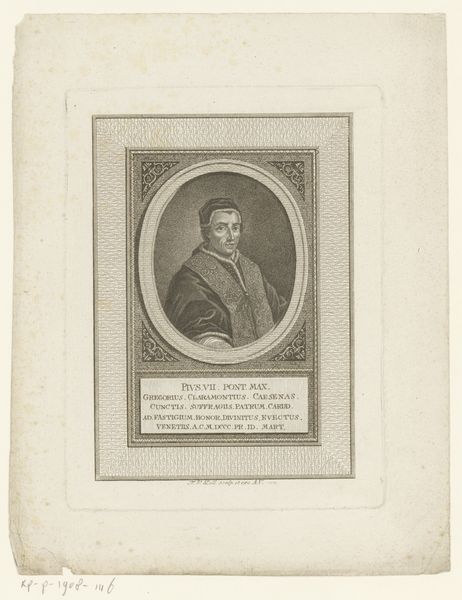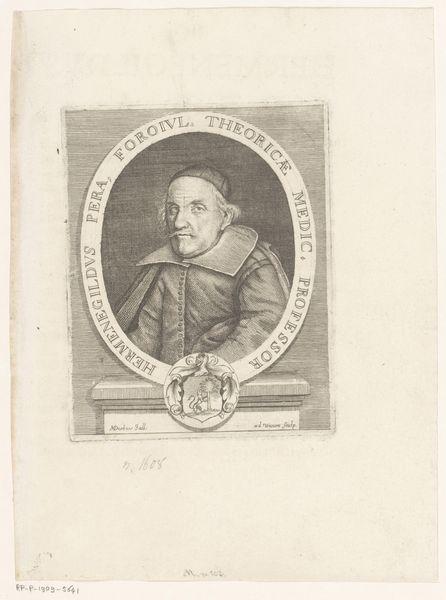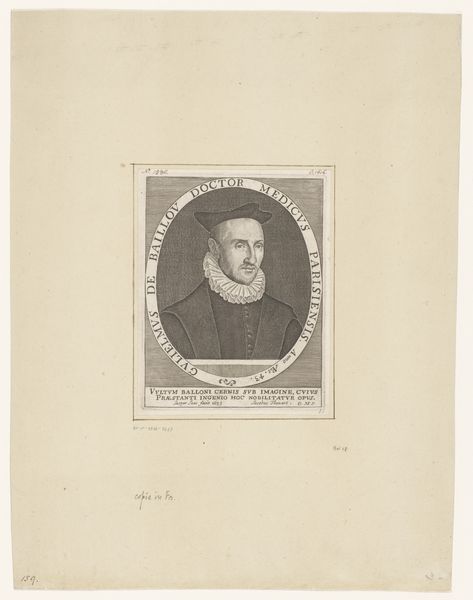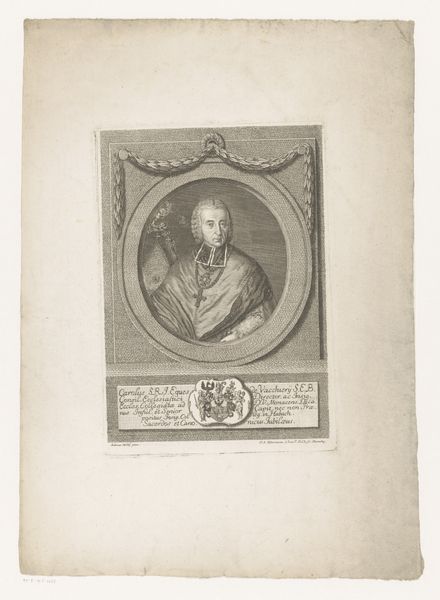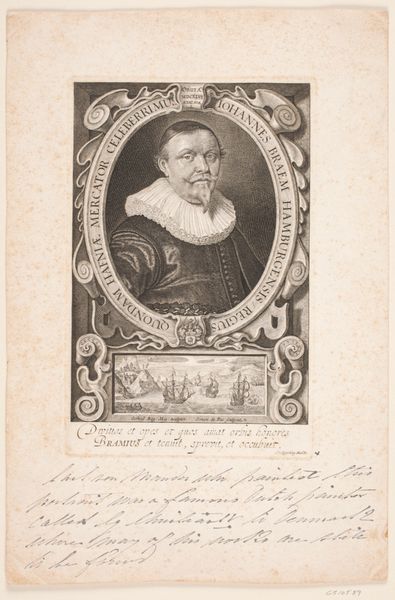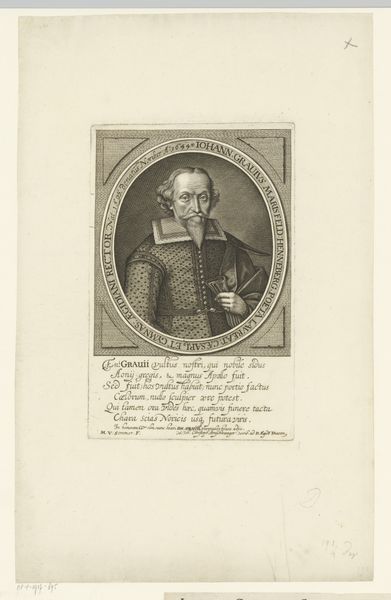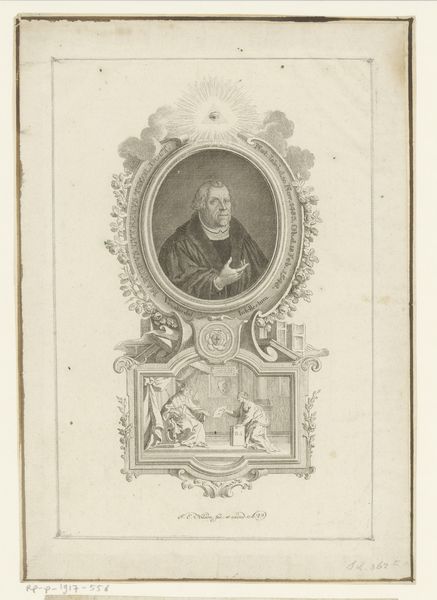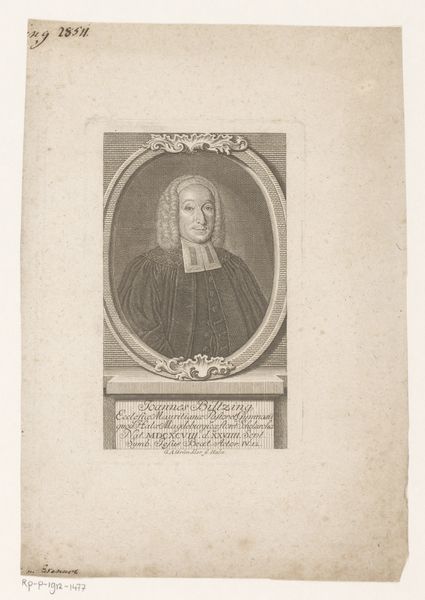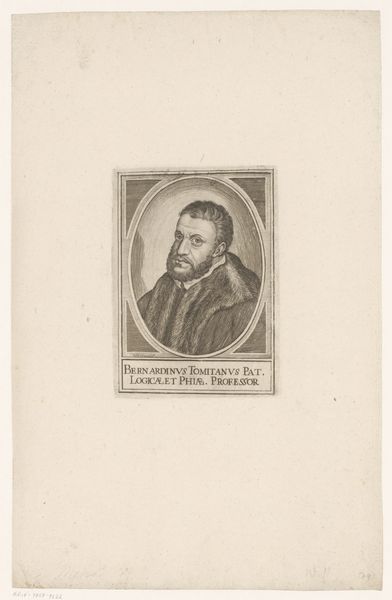
print, engraving
#
baroque
# print
#
history-painting
#
engraving
Dimensions: height 108 mm, width 70 mm
Copyright: Rijks Museum: Open Domain
Curator: Let’s examine this rather formal piece, identified as a portrait of Georg Wagensail. The dating is a bit broad, placing it sometime between 1595 and 1605. It’s executed as an engraving, a print, showcasing a figure framed within an ornate border. Editor: My immediate sense is of tight control, wouldn't you agree? The intricate collar, the tightly composed face, the rigid frame – it all speaks to a very deliberate construction of identity. I wonder how the act of commissioning such a print shaped the subject's self-perception. Curator: It’s important to consider the labour involved, as engraving at this level required skill and precision. This wouldn't have been a cheap endeavor; possessing the financial resources to procure such a print signified elevated status. The materials themselves – paper, ink, the copper plate from which the print was struck – all had an intrinsic value tied to production and distribution networks of the time. Editor: Precisely. Prints like this served a social function beyond mere portraiture. Circulated and displayed, they reinforced social hierarchies. Wagensail's position in society, signified by his clothing and the decorative cartouche surrounding his name, was being actively performed and disseminated. Was this image commissioned for a specific event, or as a general proclamation of status? The context would be crucial. Curator: I think too about the role of the printmaker – their training, workshop, and creative input in the overall piece. These are rarely considered. We view prints largely for subject, not recognizing production circumstances and artist agency, effectively obscuring their agency within broader craft history. Editor: Which, of course, becomes part of a larger visual culture of elite self-representation, readily distributed thanks to advancements in printmaking technology. These portraits contributed to and helped solidify social categories, almost creating celebrities out of certain individuals through constant visibility. It’s about power through image. Curator: And image constructed through collaboration between sitter, engraver and publisher. Something like a social-craft triumvirate! A great opportunity to consider those many hands. Editor: I agree. Thinking about distribution as active societal contribution expands my interpretation of portraiture’s intended effects in public spaces. Thank you!
Comments
No comments
Be the first to comment and join the conversation on the ultimate creative platform.
